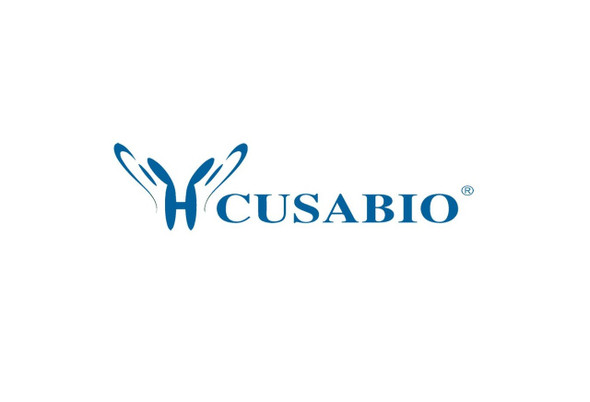Cusabio Human Recombinants
Recombinant Human Regulator of G-protein signaling 7 (RGS7) | CSB-EP019659HU
- SKU:
- CSB-EP019659HU
- Availability:
- 13 - 23 Working Days
Description
Recombinant Human Regulator of G-protein signaling 7 (RGS7) | CSB-EP019659HU | Cusabio
Alternative Name(s): RGS7; Regulator of G-protein signaling 7; RGS7
Gene Names: RGS7
Research Areas: Signal Transduction
Organism: Homo sapiens (Human)
AA Sequence: MAQGNNYGQTSNGVADESPNMLVYRKMEDVIARMQDEKNGIPIRTVKSFLSKIPSVFSGSDIVQWLIKNLTIEDPVEALHLGTLMAAHGYFFPISDHVLTLKDDGTFYRFQTPYFWPSNCWEPENTDYAVYLCKRTMQNKARLELADYEAESLARLQRAFARKWEFIFMQAEAQAKVDKKRDKIERKILDSQERAFWDVHRPVPGCVNTTEVDIKKSSRMRNPHKTRKSVYGLQNDIRSHSPTHTPTPETKPPTEDELQQQIKYWQIQLDRHRLKMSKVADSLLSYTEQYLEYDPFLLPPDPSNPWLSDDTTFWELEASKEPSQQRVKRWGFGMDEALKDPVGREQFLKFLESEFSSENLRFWLAVEDLKKRPIKEVPSRVQEIWQEFLAPGAPSAINLDSKSYDKTTQNVKEPGRYTFEDAQEHIYKLMKSDSYPRFIRSSAYQELLQAKKKSGNSMDRRTSFEKFAQNVGKSLTSKRLTSLAQSY
Source: E.coli
Tag Info: N-terminal 6xHis-tagged
Expression Region: 1-487aa
Sequence Info: Full Length of Isoform 5
MW: 60.7 kDa
Purity: Greater than 90% as determined by SDS-PAGE.
Relevance: Inhibits signal transduction by increasing the GTPase activity of G protein alpha subunits thereby driving th into their inactive GDP-bound form. Activity on G(o)-alpha is specifically enhanced by the RGS6/GNG5 dimer. May play a role in synaptic vesicle exocytosis. May play important role in the rapid regulation of neuronal excitability and the cellular responses to short-lived stimulations .
Reference: cDNA clones of human proteins involved in signal transduction sequenced by the Guthrie cDNA resource center (www.cdna.org).Puhl H.L. III, Ikeda S.R., Aronstam R.S. The DNA sequence and biological annotation of human chromosome 1.Gregory S.G., Barlow K.F., McLay K.E., Kaul R., Swarbreck D., Dunham A., Scott C.E., Howe K.L., Woodfine K., Spencer C.C.A., Jones M.C., Gillson C., Searle S., Zhou Y., Kokocinski F., McDonald L., Evans R., Phillips K. , Atkinson A., Cooper R., Jones C., Hall R.E., Andrews T.D., Lloyd C., Ainscough R., Almeida J.P., Ambrose K.D., Anderson F., Andrew R.W., Ashwell R.I.S., Aubin K., Babbage A.K., Bagguley C.L., Bailey J., Beasley H., Bethel G., Bird C.P., Bray-Allen S., Brown J.Y., Brown A.J., Buckley D., Burton J., Bye J., Carder C., Chapman J.C., Clark S.Y., Clarke G., Clee C., Cobley V., Collier R.E., Corby N., Coville G.J., Davies J., Deadman R., Dunn M., Earthrowl M., Ellington A.G., Errington H., Frankish A., Frankland J., French L., Garner P., Garnett J., Gay L., Ghori M.R.J., Gibson R., Gilby L.M., Gillett W., Glithero R.J., Grafham D.V., Griffiths C., Griffiths-Jones S., Grocock R., Hammond S., Harrison E.S.I., Hart E., Haugen E., Heath P.D., Holmes S., Holt K., Howden P.J., Hunt A.R., Hunt S.E., Hunter G., Isherwood J., James R., Johnson C., Johnson D., Joy A., Kay M., Kershaw J.K., Kibukawa M., Kimberley A.M., King A., Knights A.J., Lad H., Laird G., Lawlor S., Leongamornlert D.A., Lloyd D.M., Loveland J., Lovell J., Lush M.J., Lyne R., Martin S., Mashreghi-Mohammadi M., Matthews L., Matthews N.S.W., McLaren S., Milne S., Mistry S., Moore M.J.F., Nickerson T., O'Dell C.N., Oliver K., Palmeiri A., Palmer S.A., Parker A., Patel D., Pearce A.V., Peck A.I., Pelan S., Phelps K., Phillimore B.J., Plumb R., Rajan J., Raymond C., Rouse G., Saenphimmachak C., Sehra H.K., Sheridan E., Shownkeen R., Sims S., Skuce C.D., Smith M., Steward C., Subramanian S., Sycamore N., Tracey A., Tromans A., Van Helmond Z., Wall M., Wallis J.M., White S., Whitehead S.L., Wilkinson J.E., Willey D.L., Williams H., Wilming L., Wray P.W., Wu Z., Coulson A., Vaudin M., Sulston J.E., Durbin R.M., Hubbard T., Wooster R., Dunham I., Carter N.P., McVean G., Ross M.T., Harrow J., Olson M.V., Beck S., Rogers J., Bentley D.R.Nature 441:315-321(2006)
Storage: The shelf life is related to many factors, storage state, buffer ingredients, storage temperature and the stability of the protein itself. Generally, the shelf life of liquid form is 6 months at -20?/-80?. The shelf life of lyophilized form is 12 months at -20?/-80?.
Notes: Repeated freezing and thawing is not recommended. Store working aliquots at 4? for up to one week.
Function: Regulates G protein-coupled receptor signaling cascades. Inhibits signal transduction by increasing the GTPase activity of G protein alpha subunits, thereby driving them into their inactive GDP-bound form
Involvement in disease:
Subcellular Location: Cytoplasm, cytosol, Cytoplasm, Cell membrane, Membrane, Peripheral membrane protein, Cytoplasmic side
Protein Families:
Tissue Specificity:
Paythway:
Form: Liquid or Lyophilized powder
Buffer: If the delivery form is liquid, the default storage buffer is Tris/PBS-based buffer, 5%-50% glycerol. If the delivery form is lyophilized powder, the buffer before lyophilization is Tris/PBS-based buffer, 6% Trehalose, pH 8.0.
Reconstitution: We recommend that this vial be briefly centrifuged prior to opening to bring the contents to the bottom. Please reconstitute protein in deionized sterile water to a concentration of 0.1-1.0 mg/mL.We recommend to add 5-50% of glycerol (final concentration) and aliquot for long-term storage at -20?/-80?. Our default final concentration of glycerol is 50%. Customers could use it as reference.
Uniprot ID: P49802
HGNC Database Link: HGNC
UniGene Database Link: UniGene
KEGG Database Link: KEGG
STRING Database Link: STRING
OMIM Database Link: OMIM









